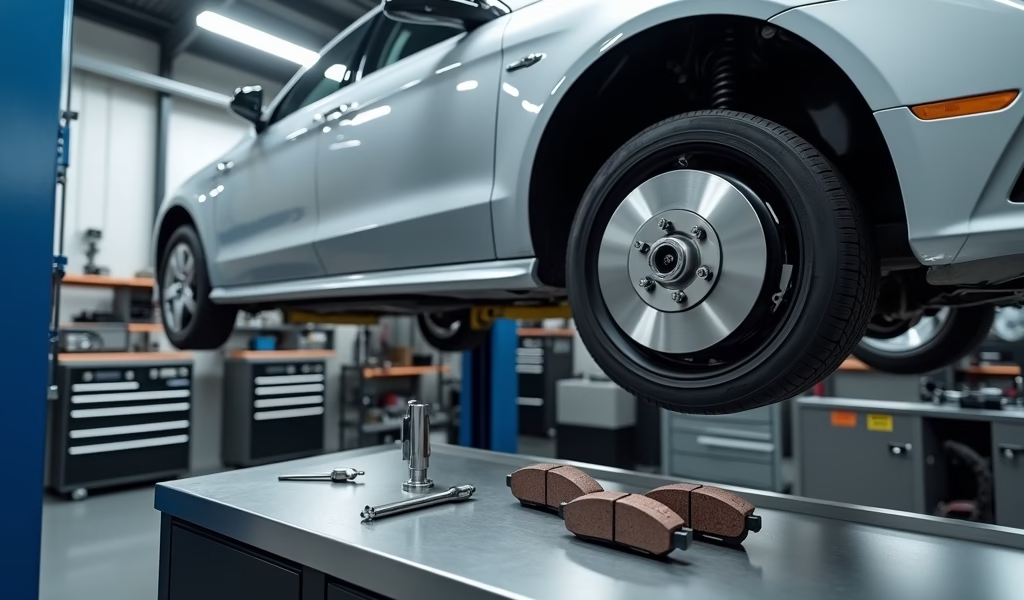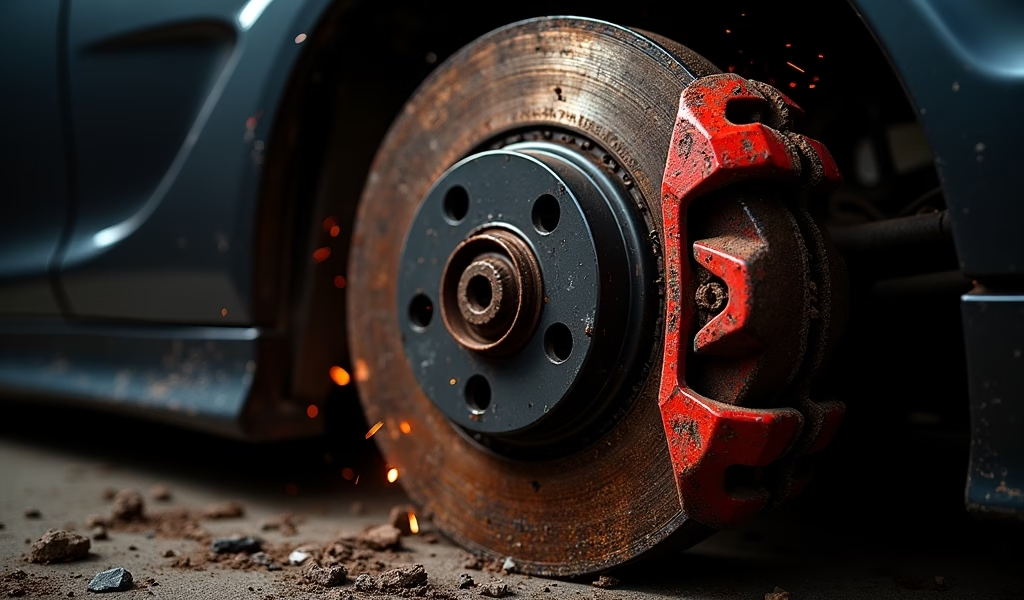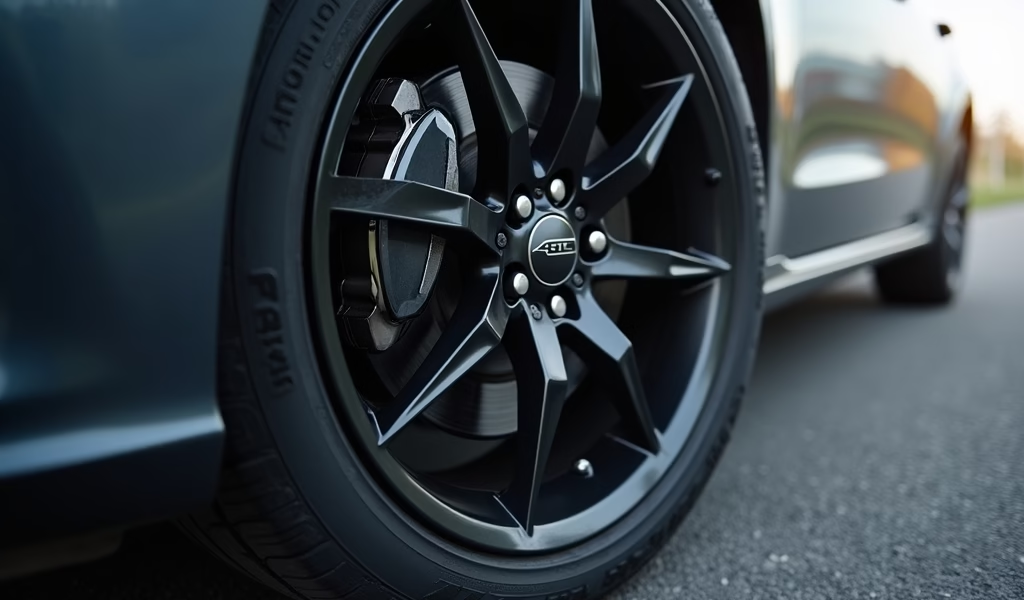Overview
Brake pad replacement costs vary significantly between professional service ($150-$450 per axle) and DIY ($30-$100 for parts only), with potential savings of $200-$500 for a complete job. The article details warning signs of worn pads, explains different pad materials (ceramic, semi-metallic, and organic), and offers maintenance tips to extend pad life while emphasizing that brakes should never be neglected as they’re critical safety components.
Table of Contents
- Understanding Brake Pads: Your Vehicle’s Critical Safety Component
- Signs Your Brake Pads Need Replacement
- Professional Brake Pad Replacement Costs Breakdown
- DIY Brake Pad Replacement: Where the Savings Happen
- Choosing the Right Brake Pads for Your Vehicle
- Extending Your Brake Pads’ Lifespan
- DIY vs. Professional: Making the Right Choice
- Conclusion
- Frequently Asked Questions
Understanding Brake Pads: Your Vehicle’s Critical Safety Component
Let’s talk about brake pads replacement cost – that unavoidable expense that makes many car owners wince. As someone who’s been elbow-deep in brake dust for over 20 years, I can tell you that few maintenance items are as crucial as your brake pads. These humble components are literally what stand between you and potential disaster on the road.
Brake pads are thin friction materials mounted on metal backing plates that press against your brake rotors when you hit the pedal. This creates the friction needed to slow down and stop your vehicle. Think of them as the sacrificial heroes of your braking system – they wear down so the rest of your car doesn’t have to.
Most vehicles use disc brakes on at least the front wheels, with each wheel requiring two brake pads. When you press your brake pedal, hydraulic pressure forces these pads to squeeze against the spinning rotor, converting kinetic energy into heat energy through friction. It’s a beautifully simple system that works thousands of times without complaint – until it doesn’t.
The average set of brake pads lasts between 30,000 and 70,000 miles, though this range varies significantly based on driving habits, vehicle weight, pad quality, and typical driving conditions. City drivers who frequently tap their brakes in stop-and-go traffic will need replacements more often than highway cruisers.
Signs Your Brake Pads Need Replacement
Your vehicle will usually give you several warning signals before brake pads reach a dangerous level of wear. Ignoring these signs isn’t just risky – it’s also financially unwise, as worn pads can damage other braking components, turning a simple pad replacement into a much costlier repair.
The most common indicator is that high-pitched squealing or screeching when you apply the brakes. This sound comes from a small metal wear indicator that’s designed to contact the rotor when pad material gets thin – essentially a built-in alarm system for your brakes.
Other warning signs include:
- Grinding or growling sounds (metal-on-metal contact – you’ve waited too long)
- Brake warning light illumination on your dashboard
- Vibration or pulsation when braking
- Longer stopping distances than normal
- Vehicle pulling to one side during braking
- Visible thinning of brake pad material (less than ¼ inch)
If you notice any of these symptoms, it’s time to check your brake pad replacement options. Addressing the issue promptly can save you significant money and prevent more extensive damage.

Professional Brake Pad Replacement Costs Breakdown
When you take your vehicle to a professional for brake pad replacement, you’re paying for convenience, expertise, and peace of mind. But what exactly makes up that final bill? Let’s break down the typical costs you’ll encounter.
Dealership service centers typically charge between $250 and $450 for brake pad replacement on a single axle (two wheels). Independent repair shops often come in slightly lower at $150 to $350 for the same service. This price gap isn’t surprising – dealerships have higher overhead costs and often use OEM (Original Equipment Manufacturer) parts, which command premium prices.
The make and model of your vehicle dramatically impacts these costs. A study from AAA found that European luxury vehicles can cost up to 70% more for the same brake service compared to domestic models. This difference stems from specialized parts, tools, and training needed for these vehicles.
Labor typically accounts for 40-60% of the total brake service cost, varying based on your location and the shop’s hourly rate. Urban areas generally command higher labor rates than rural locations, sometimes by $30-50 per hour.
Additional services that might be recommended during a brake job include:
- Rotor resurfacing or replacement ($20-100 per rotor)
- Caliper cleaning and lubrication ($20-40)
- Brake fluid flush ($60-150)
- Hardware replacement (clips, shims) ($10-30)
While some of these services are legitimate and necessary, others might be optional depending on your vehicle’s condition. Don’t hesitate to ask your mechanic to explain why each service is recommended – a good technician will be happy to educate rather than intimidate.
DIY Brake Pad Replacement: Where the Savings Happen
Here’s where things get interesting for the mechanically inclined or the financially motivated. DIY brake pad replacement typically costs between $30 and $100 per axle for parts alone – a fraction of professional service prices.
The math is compelling: even accounting for tool purchases, most DIYers save $100-250 per axle compared to professional installation. For a complete brake job on all four wheels, that’s potentially $200-500 staying in your pocket.
To tackle this job, you’ll need some basic tools:
- Jack and jack stands (safety first – never work under a car supported only by a jack)
- Lug wrench
- C-clamp or caliper piston tool
- Socket/wrench set
- Brake cleaner spray
- Anti-seize compound and brake lubricant
- Torque wrench (highly recommended for proper wheel reinstallation)
Most first-timers can complete a brake pad replacement on one axle in 2-3 hours. With experience, this time drops significantly – I’ve seen seasoned DIYers knock out all four wheels in under 90 minutes.
The basic process involves:
- Safely raising and securing the vehicle
- Removing the wheel
- Removing the caliper and bracket (designs vary by vehicle)
- Removing old pads and cleaning mounting hardware
- Compressing the caliper piston(s)
- Installing new pads with proper lubrication on contact points (not the friction surface!)
- Reinstalling the caliper and bracket
- Replacing the wheel and properly torquing lug nuts
- Pumping the brake pedal to restore proper pedal feel before driving
For detailed instructions specific to your vehicle model, online repair resources or service manuals are invaluable references. Many DIYers also find video tutorials particularly helpful for visualizing the process.
Choosing the Right Brake Pads for Your Vehicle
Not all brake pads are created equal. Understanding the different types and their characteristics will help you make an informed choice that balances performance, longevity, and cost.
Ceramic pads ($30-80 per axle) have become increasingly popular for everyday driving. They produce less dust, operate more quietly, and typically last longer than other options. The tradeoff is a higher initial cost and slightly less aggressive braking performance in extreme conditions.
Semi-metallic pads ($25-50 per axle) contain 30-65% metal content, offering excellent heat dissipation and strong braking performance. These are ideal for performance driving and heavier vehicles, but they tend to be noisier and produce more brake dust.
Organic pads ($20-40 per axle) are the budget-friendly option, composed of materials like rubber, glass, and carbon. They’re quieter and gentler on rotors but typically wear faster than ceramic or semi-metallic options.
For most daily drivers, mid-range ceramic pads from reputable manufacturers like Akebono, Wagner, Bosch, or Brembo offer the best balance of performance, longevity, and value. Performance vehicles or those used for towing might benefit from higher-end semi-metallic options.
One often overlooked factor in brake replacement is the quality of included hardware. Premium pad sets include new clips, shims, and hardware that reduce noise and ensure proper operation. Skimping here to save $10-15 often leads to squeaky, underperforming brakes.

Extending Your Brake Pads’ Lifespan
Want to stretch the interval between brake services? Small changes in your driving habits can significantly extend pad life, saving you money and reducing maintenance frequency.
Practice smooth, progressive braking whenever possible. Aggressive, last-minute stops not only wear pads faster but also generate excessive heat that can warp rotors. Looking farther ahead in traffic allows you to anticipate stops and brake more gradually.
When descending long hills, use engine braking by downshifting to a lower gear rather than riding your brakes. This technique reduces pad wear and prevents brake fade from overheating.
Reduce excess weight in your vehicle. Every 100 pounds of unnecessary cargo increases braking distances and accelerates pad wear. That collection of sports equipment perpetually rolling around in your trunk? Time to bring it inside.
Regular brake service inspections can catch minor issues before they become major problems. Having your brakes visually checked during routine oil changes costs nothing extra but can provide early warning of uneven wear or impending problems.
Surprisingly, keeping your brake fluid clean and changed according to manufacturer recommendations (typically every 2-3 years) also extends pad life. Contaminated brake fluid can degrade seals and lead to caliper issues that cause pads to drag or wear unevenly.
DIY vs. Professional: Making the Right Choice
While the financial benefits of DIY brake pad replacement are clear, it’s not the right choice for everyone. Consider these factors when deciding whether to tackle the job yourself or leave it to professionals.
Your comfort level with vehicle maintenance is paramount. Brakes are a critical safety system – if you’re unsure about your abilities or lack the necessary tools, the savings aren’t worth compromising safety. Start with simpler maintenance tasks to build confidence before tackling brakes.
Vehicle complexity varies significantly. While brake pad replacement on many vehicles is straightforward, some modern cars have electronic parking brakes or complex systems that require special tools or procedures. Research your specific model before deciding.
Time constraints matter too. If you can only work on your vehicle during limited weekend hours, consider whether the learning curve and potential challenges are worth the time investment. Sometimes paying a professional is worth the convenience of having your car back the same day.
Certain situations strongly favor professional installation:
- Vehicles with advanced driver assistance systems that require recalibration
- When rotors need replacement or machining (requires specialized equipment)
- If you notice leaking brake fluid or damaged calipers
- When warning lights or unusual symptoms suggest problems beyond simple pad wear
Remember that even if you choose professional installation, knowledge is power. Understanding the brake system helps you communicate with your mechanic and make informed decisions about recommended services.
Conclusion
Brake pad replacement doesn’t have to break the bank. Whether you choose the DIY route and save $200-500 on a complete brake job, or simply use your knowledge to make smarter decisions when working with a professional, understanding the basics of brake maintenance puts you in the driver’s seat.
The most important takeaway is never to ignore brake warning signs. Addressing worn pads promptly not only ensures your safety but also prevents the domino effect of damage to more expensive components like rotors and calipers.
With proper maintenance and thoughtful driving habits, you can extend the life of your brake pads and reduce the frequency of replacements. When the time comes for new pads, make an informed choice based on your vehicle needs, driving style, and comfort level with DIY projects.
Remember that while saving money is great, your braking system is literally your vehicle’s lifeline. Never compromise on quality for a few dollars of short-term savings – your safety and that of your passengers depends on those humble pads doing their job reliably, every single time you press the pedal.
Frequently Asked Questions
How much does it cost to replace brake pads at a dealership vs. an independent shop?
Dealerships typically charge $250-450 per axle, while independent shops charge $150-350. The difference reflects overhead costs and part markup, with dealers usually using OEM parts.
How often do brake pads need to be replaced?
Most brake pads last 30,000-70,000 miles depending on driving conditions, vehicle weight, and pad quality. City driving with frequent stops wears pads faster than highway cruising.
Can I replace just the brake pads without replacing the rotors?
Yes, if your rotors are in good condition with adequate thickness and no warping or scoring. Have them inspected during pad replacement to ensure they meet manufacturer specifications.
How do I know if my vehicle needs new brake pads?
Warning signs include squealing/screeching noises when braking, grinding sounds, vibration during braking, longer stopping distances, and visible wear (less than ¼ inch of pad material). Some vehicles also have dashboard warning lights.
Which brake pad material is best: ceramic, semi-metallic, or organic?
For most daily drivers, ceramic pads offer the best balance of performance, longevity, and low dust. Semi-metallic pads are better for performance vehicles, while organic pads are more budget-friendly but wear faster.


Pingback: How Much To Change Brake Pads: Top Tips - knowsyourcar.com